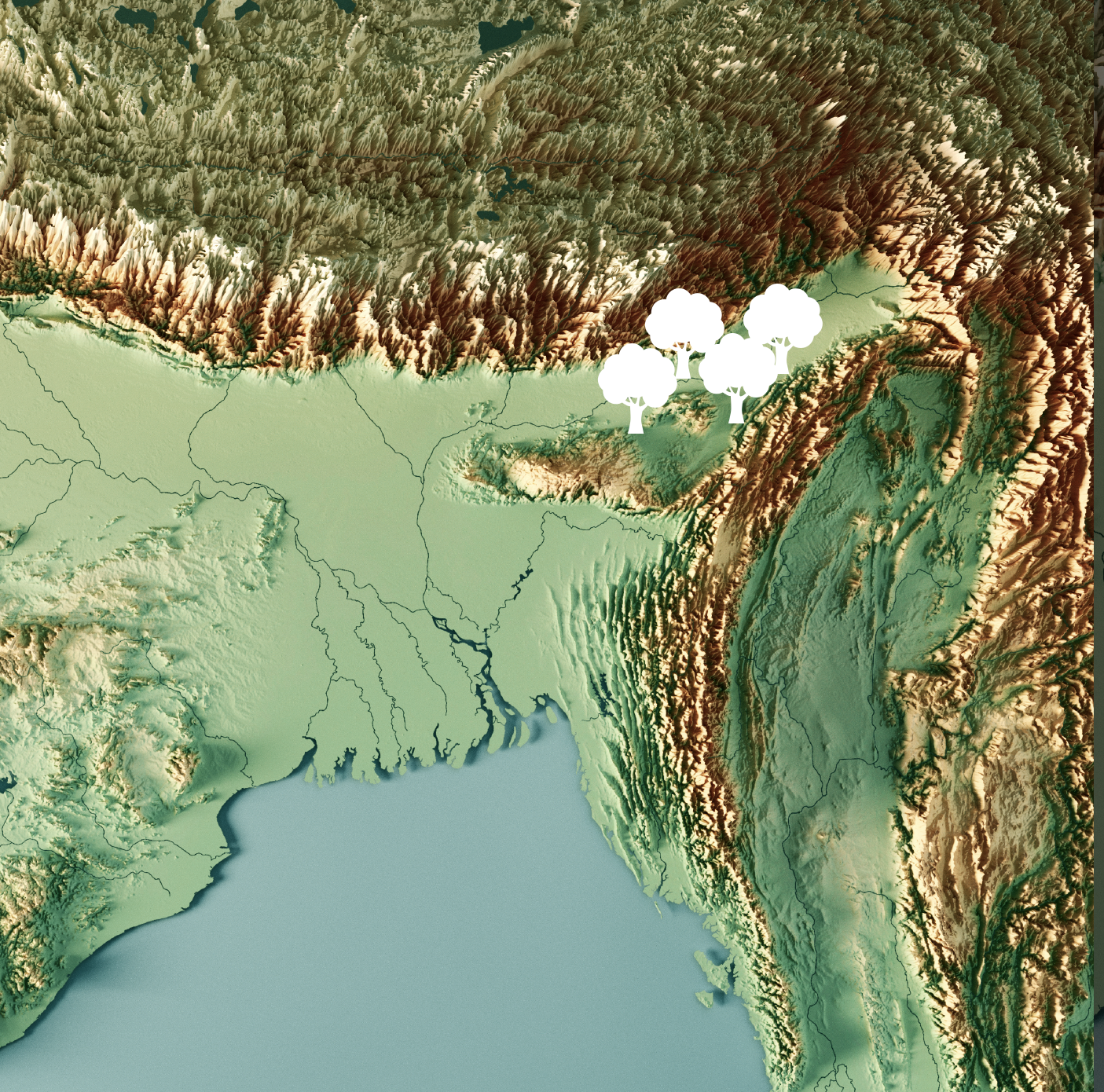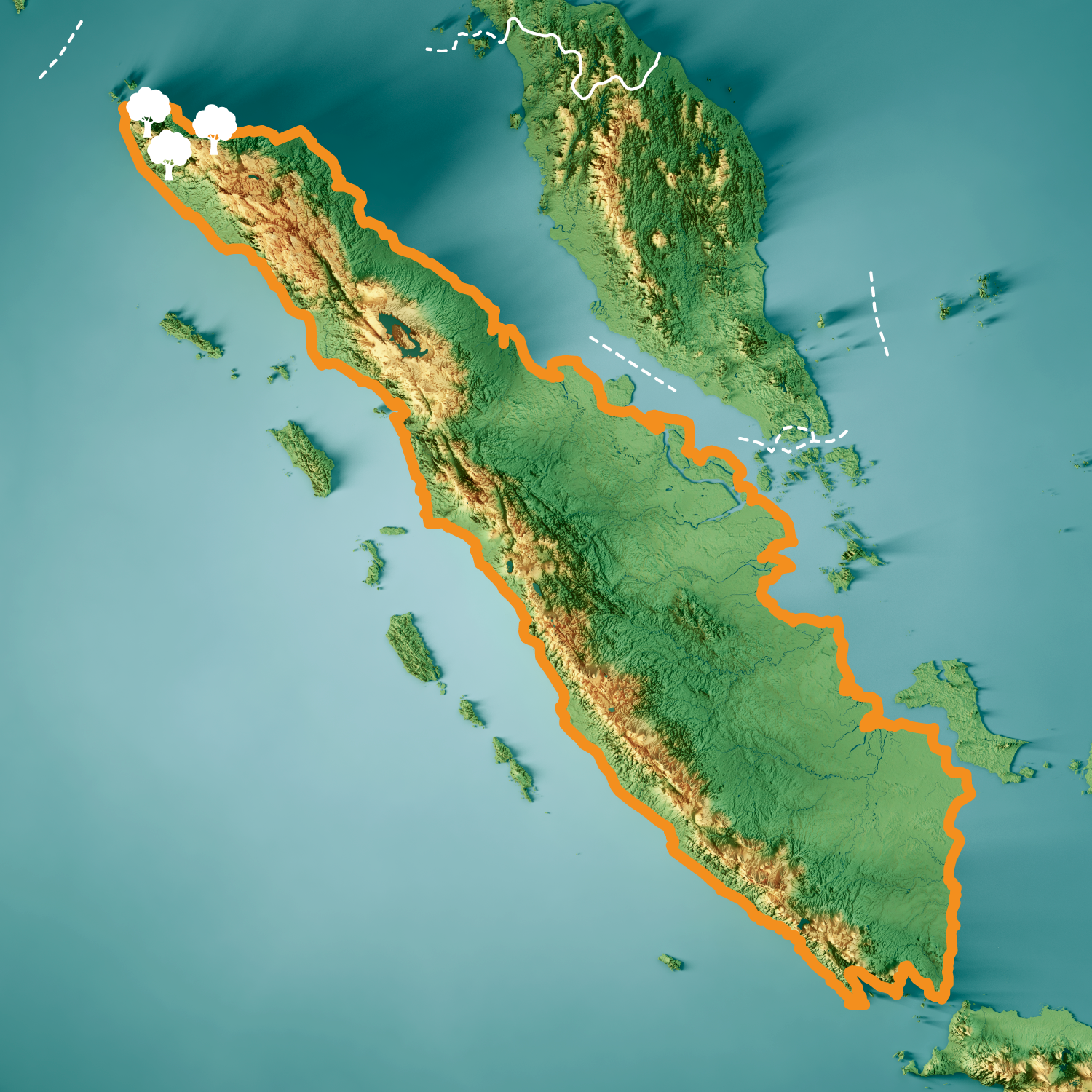in collaboration with BNP Paribas
SHANGHAI COMMERCIAL & SAVINGS BANK
The Project
Through an innovative campaign with BNP Paribas Taipei branch, The Shanghai Commercial & Savings Bank is now encouraging its clients to participate in the planting of trees in order to take action towards reforestation, fight against climate change and develop biodiversity.
For the duration of the campaign, for each 10,000 USD invested in a selected investment product, 1 tree will be planted by our reforestation partner in the forests of Assam, India.
BNP Paribas or its affiliates shall make an arrangement with a reforestation partner in its sole discretion to organise the plantation in one or several forestry projects. The reforestation partner shall be solely responsible to ensure that the trees are planted.
Why plant trees?
Forests are both the primary terrestrial carbon sink and the main source of biodiversity on land. In an unprecedented context of climate change and biodiversity erosion, forests are today our main natural allies in preserving and restoring biodiversity and in taking action against climate change.
For more information about The Shanghai Commercial & Savings Bank, visit their website.
The Indian state of Assam is located in the eastern tip of India, between Bhutan, China and Bangladesh. Since 2000, this region of the eastern Himalayas has lost more than 9.5% of its vegetation cover, due to the increasing conversion of natural primary forests to agricultural plots, and the invasion of exotic species that thrive at the expense of native vegetation. The result is a decline in the health of natural ecosystems, which can be seen in terms of soil degradation, increasing land desertification, and the depletion of water tables. Faced with a degraded environment, local populations are confronted with decreasing agricultural yields, which goes hand in hand with the collapse of their food security – in the state of Assam, only 8% of young people between the ages of 6 and 23 benefit from a healthy and balanced diet.
In this context that BNP Paribas has partnered with a reforestation social enterprise, which in turn joined forces with the Balipara Foundation, an Indian NGO, with the dual objective of restoring the forests of the State of Assam, in the Eastern Himalayas, and developing agroforestry in order to provide local communities with more sustainable agricultural solutions for their cotton and tea crops.

Will be planted by our reforestation partner on behalf of The Shanghai Commercial & Savings Bank in the Eastern Himalayas on the Indian State of Assam
Benefits created by the trees planted*
Last Update : 30/06/2025
Indonesia is home to the 8th largest forest area in the world. Unfortunately, deforestation is raging: large-scale cuttings lead to the loss of more than 800,000 hectares of forest per year. In the north of Sumatra, the province of Aceh is severely affected by these massive deforestations and mangroves, forest ecosystems typical of tropical coastal areas, are particularly affected. In 1987, the province had 200,000 hectares of mangroves. Today, less than half of this area remains since the rest was converted into areas for intensive shrimp and fish breeding, and illegally cut down to make firewood or charcoal. Unfortunately, the loss of mangroves, ecosystems that mark the boundary between land and sea, has a dramatic impact in the context of global warming: accelerated change in water levels and coastal erosion, loss of biodiversity, etc.
To protect the land and restore the degraded areas, BNP Paribas and its reforestation social enterprise partner together with the NGO Yakopi, support local communities in the reconstitution of these precious ecosystems. During the project, the mangrove is restored through the planting of new seedlings.

Will be planted by our reforestation partner on behalf of Shanghai Commercial & Savings Bank in the Sumatra mangrove forest
Benefits created by the trees planted*
Last Update : 31/10/2025
*Source: Reforestation partner. Tons of Co2 Stored: One tree stores approximately 150kg of CO2 over the span of 30 years. This data comes from the calculation method defined in the book “Forest and Carbon” published in 2015, taking as a reference an example of a plantation project in a French forest following the most widespread sustainable management method. The result obtained gives a quantity of CO2 stored per hectare. For the sake of popularization, this figure is reduced to the tree by taking the average planting density of the projects. However, it is interesting to note that in tropical areas, a tree stores around 300 kg of CO2 over 30 years (“Atlas of forests in the world”, Boulier and Simon, 2010). However, the figure of 150 kg of CO2 stored per tree was kept so as not to overestimate our impact on the climate. Shelters for Animals Created: 1 tree = 3 animal shelters. An IRSTEA study published in Biological Conservation establishes correlations between the species of a tree and the number of microhabitats it shelters within its bark, its branches or its cavities. A deciduous tree provides on average 3 shelters for animals, and a softwood tree provides on average 2.5 shelters for animals. Months of oxygen generated: 1 tree = 4 months of oxygen. According to Thomas Similowski, an expert pulmonologist from APHP, an adult consumes approximately 700 g of O2 per day. However, according to our reforestation partner forestry experts, a tree produces between 20 and 150 kg of O2 per year. In order to cover a person’s oxygen needs for a year, an average of 3 trees are needed. We thus obtain the equivalence of a tree planted for 4 months of oxygen. Hours of work created: According to an FAO article published in 2009 in the journal Unasylva – 233 – “Creating forestry jobs to stimulate the economy and build a green future”, afforestation and reforestation activities are the best opportunities for job creation. In the case of afforestation or reforestation activities, 5 million hectares planted annually create 4 to 5 million full-time equivalent jobs (i.e. 35 hours per week).
